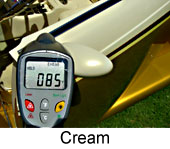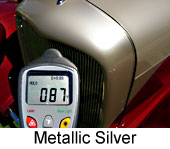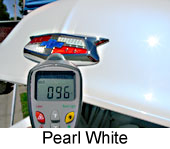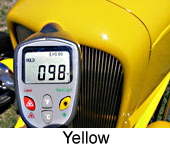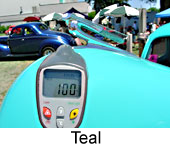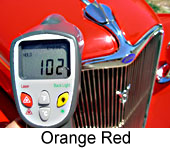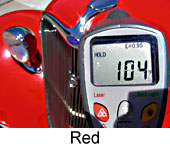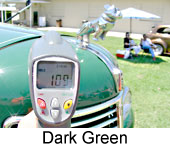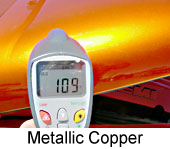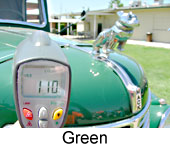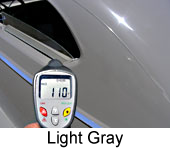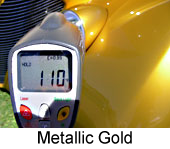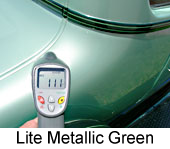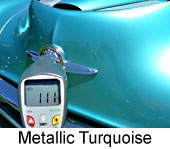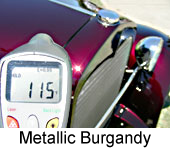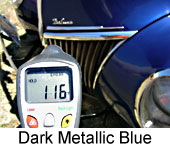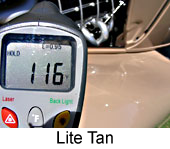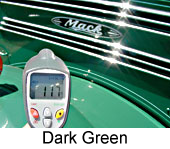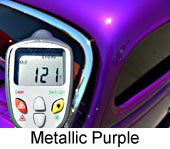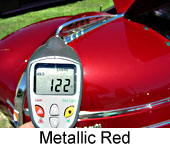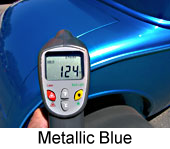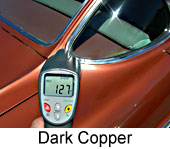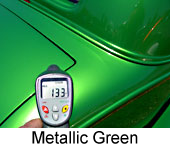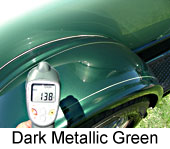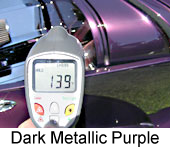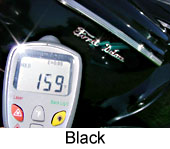What temperature is your color?
The coolest cars on the Arizona highways are white. That is because white is the lightest color in Detroit’s automotive rainbow and absorbs the least amount of heat. A white car or truck also transmits the least amount of radiant heat into the passenger cabin as opposed to a black vehicle which will transmit the most amount heat. A white vehicle is a “cooler” car color to drive because it is less taxing on the vehicle’s air conditioning system. The auto makers make no distinction in the amount of insulation they put into a car—usually not very much--based on the color that the car will be painted when finished.
An annual PPG Color Trend Survey concludes that white remains the most popular color choice for car shoppers across the globe. Twenty-two percent of global car buyers chose white cars in 2012, reports PPG Industries. White was followed by silver in second place (20 percent), black (19 percent) and gray (12 percent). In North America, the results were largely the same, with white taking 21 percent of all sales, followed by black (19 percent), silver (16 percent) and gray (16 percent).
As part of Quiet Ride's research and product development, we have literally striped virtually every make and model of vehicle that has been introduced to the public by Ford General Motors and Chrysler. While there has been significant improvements in the manufacturing process which makes for a “structurally tighter and safer” car, there has been a progressive reduction in the amount of passenger cabin insulation—and what little materials you find, are of lesser quality and effectiveness.
So when it comes to selecting your every day driver, color can make a big difference in interior comfort and fuel efficiency. The lighter the color, the less “cycle time” required from the AC unit. The darker the exterior color, more “cycle time” will be required to keep the interior cool. And the more the AC unit runs, the less fuel mileage you will get per gallon. It may not sound like much, but a drop of two miles per gallon over 100,000 miles can add up to a significant amount of money.
The point here is not suggest that all antique, classic and custom cars and trucks should be painted white—that would make for really boring car shows. However, you do have that once in a life time opportunity to insulate the interior of the vehicle for maximum passenger cabin performance.
Because you are in the position to change factory status quo, you can greatly enhance the “ride” you will get by properly sound dampening and insulating those body, roof and floor panelsTo illustrate our point, we shot these photos with a digital heat thermometer at the Lodi Grand National Roadster show in early June, 2007. It was a pleasant summer day in the Central San Joaquin Valley with a Noon temperature of only 81 degrees. Take a look at the wide range of temperatures from 85 degrees to 159 degrees. On a normal valley day, when nature’s ambient temperature is a scorching 100+degrees, you can add 25 to 30 degrees to all of these measurements.
